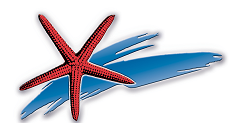Larus michahellis michahellis
Family: Laridae
Length: 52 – 68 cm
Wingspan: 120 – 158 cm
Weight: 550 – 1600 g

Identification
Appearance: large gull with grey back, a yellow bill with a red spot under the tip (as adults), a red ring around the eye and yellow legs. The longest flight-feathers are black with white spots on the extremities.
Distinguishing characteristics: red ring around the eye and yellow legs.
Flight: easy flight thanks to large wings, like all gulls.
Sound: loud nasal laugh.
Ecology and habitat
Nest: sparse mound of vegetation built on the ground or on cliff ledges, coastal dunes, rocky or sandy islands, lagoons, coastal marshes, salt marshes; also in urban areas (on house roofs).
Diet: omnivores and opportunistic foragers (e.g. fish, invertebrates, reptiles, small mammals, bird eggs and chicks).
Behaviour at sea: rather solitary.
* This map indicates coastal nesting sites in the Mediterranean and adjacent Seas.
Distribution and movement
Breeding: colonies all along the Mediterranean coast, on the western shore of the Black Sea, in western and southern Europe, and in northwestern Africa. Spreading more recently north into central and western Europe.
Wintering: some remain in the same area all year round while others migrate to spend the winter in mild areas of western Europe, Senegal, Gambia or Red Sea.
Phenology: Laying: mid March to early May; one to three eggs. Incubation: 26 – 30 days. Fledging: after 35-40 days. Post-breeding movements: July to November.
Conservation
Global population estimate: European population: 409,000 – 534,000 pairs.
Threats: oil pollution, bycatch in longline fisheries, habitat destruction and disturbance from tourism and egg harvesting.
Protection level: Barcelona Convention : Annex II; Bern Convention : Annex III; Birds Directive : Annex I; IUCN Red List: Least Concern.
Some key references
BirdLife International (2015) Larus michahellis. The IUCN Red List of Threatened Species 2015: e.T62030970A66721717.
